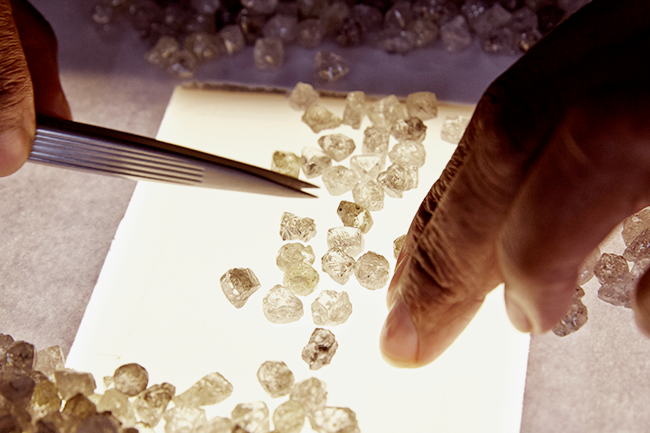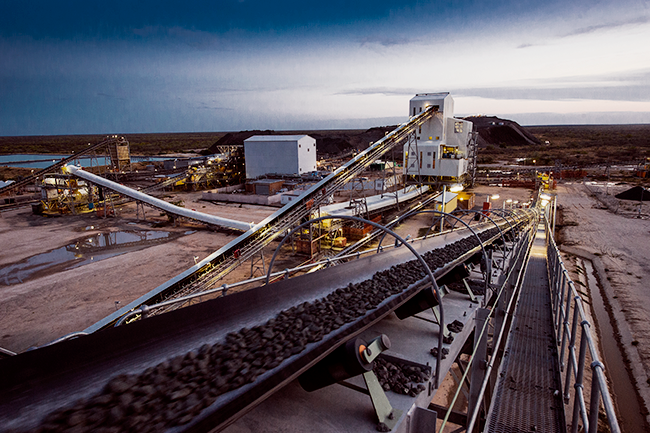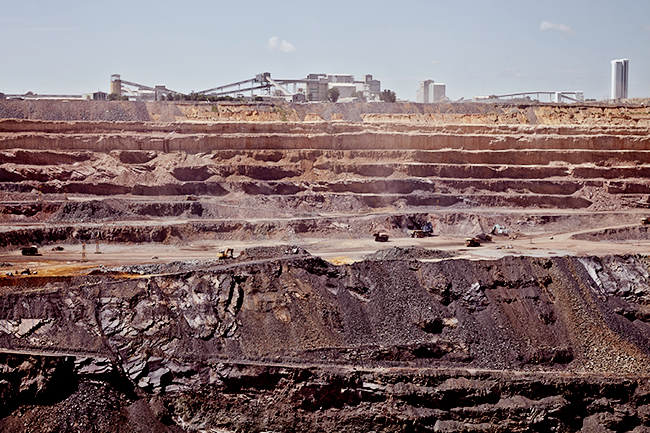There is a mining boom town in Southern Africa at present. It is Francistown in north-eastern Botswana, the base for companies involved in exploration and development in copper, nickel and coal – in short, all minerals available in Botswana, other than diamonds. The diamond capital remains Gaborone, located further south.
Botswana has been Africa’s best regulated mining jurisdiction for many years. Based on an extensive diamond mining and processing network – including the world’s richest diamond mine (Jwaneng) – the country’s top-class regulatory regime dates back to the Mines and Minerals Act of 1999. But more than the simple, neutral and transparent criteria for granting mining and exploration licences, it is the government’s commitment to regulatory best practice that has driven the current expansion phase.
In addition to four coal projects approaching fruition in 2018, three copper projects in the north-east of the country around Francistown look promising. The Kalahari copperbelt looks likely to join two countries to the north – the DRC and Zambia – as a significant producer of the red metal. There are also nickel prospects being explored in the east of the country, along the edge of the Zimbabwe and Kaapvaal Craton.
After Botswana dropped to number 21 of 91 mining jurisdictions worldwide on the Fraser Institute’s Investment Attractiveness rankings in 2017 (down from 12th out of 104 in 2016) – still the best on the African continent – the government moved rapidly to implement reforms. In June, Eric Molale, Minister of Mineral Resources, Green Technology and Energy Security, announced the new mining policy would be brought before Parliament this year.
‘It is our belief that proposed amendments to [current legislation] will improve the ease of doing business,’ he said, adding that the overarching objective is to ensure that Botswana becomes ‘the mining investor’s destination of choice’.
According to Botswana Metals, which is currently exploring in the nickel subsector from a base in Francistown: ‘Botswana has a fantastic regulatory environment and social acceptance of mining. Furthermore, the government is very supportive of the mining industry.’
The Fraser Institute commented, in 2015, that ‘Botswana’s mining policies are clearly defined and obtaining all the required mining permits is relatively quick and straightforward compared to most countries’.

The basis of all this is of course the diamond industry. Discovered in 1966 (the same year the country achieved independence) and first mined in 1972, diamonds have been the basis for Botswana’s economic growth on a scale more readily associated with East Asia than Africa. Economic growth has tapered off a little since the millennium (from an average of 9% per year) but has averaged 5% per year over the past decade, according to World Bank figures.
The dominant player in the diamond sector is a partnership between global producer De Beers and the government of Botswana, formalised in a local company – Debswana. The firm runs four open-pit diamond mines, with 92% of production coming from Jwaneng and Orapa. Botswana also has independent diamond producers, notably Lucara’s Karowe mine, the third-biggest producer by value in 2017. Karowe produced the second-largest gem-quality diamond ever found (after the famous Cullinan Diamond), the 1,109 carat Lesedi La Rona (‘our light’ in Tswana), which sold for US$53 million.
Revenues from the diamond mines have been used to build the infrastructure for economic development, including thousands of kilometres of paved roads, as well as schools and clinics in every town. Botswana, the poorest country in the world in 1966 (with a per capita income of just US$70), is now classified an upper middle-income country with a per capita income of US$6,760 [2016].

In 2018, the diamond industry in Botswana looks in good shape. Debswana expects demand – already up between 3% and 4% in 2017 – to continue rising in 2018, as tax cuts in the US leave consumers with more to spend on luxury goods. In April, the company announced plans to expand the Jwaneng mine by proceeding, as expected, with a ninth deepening since it opened in 1971 (known as Cut 9). The project will extend the mine’s life by 11 years, to 2035, and allow the extraction of a further 50 million ct.
However, dependence on a single commodity leaves any national economy open to external shocks. Since the 1990s, diversification has been the holy grail of economic development policy in Botswana. Further development along the diamond value chain has already taken place, with a massive sorting operation in Gaborone and a small diamond-cutting industry that the government hopes to see further developed.
Botswana isn’t a promising location for manufacturing as it has a small internal market of 2 million people. Attention thus turned to prospecting for and developing other mineral commodities and to minerals beneficiation.
One of the primary focus areas has been the monetarisation of Botswana’s 200 billion tons of coal reserves. Going into 2018, the country had just one colliery, the Morupule mine, which supplies mainly an adjacent 600 MW power station – Morupule B, located in eastern Botswana. But in the near future the country could have up to four more mines. One of these is the Masama coal project, an opencast mine planned for the Mmamabula coalfield, 50 km north of Gaborone. The owner, Minergy, expects to begin selling coal by year-end, with initial production at 100,000 tons per month, increasing to 200,000 tons within 18 months.
Minergy non-executive chairman Mokwena Morulane says the company will focus on delivering high-quality coal to the regional market, including South Africa. A new rail siding, under negotiation to service the Mmamabula coalfield, will reduce logistics costs significantly and allow for global exports, probably through the South African coal terminal at Richards Bay. Minergy has said it intends listing in late 2018 on the AIM board of the London Stock Exchange (LSE), a board for smaller companies.
Other coal projects are managed by Maatla Resources, which is developing an asset on the Mmamabula coalfields and has longer-term plans to develop a gas-to-liquids facility near the same site. Shumba Energy has three sites (Morupule South, Mabesekwa and Sechaba), all of them linked to plans for power stations. Australian-listed African Energy Resources is looking to develop the Sese combined mine/power station project, south of Francistown, in partnership with Canada’s First Quantum Minerals.

Developments towards coal beneficiation, through the production of electrical power in Botswana, have come at the right time with neighbouring South Africa, providing a ripe potential market.
Copper is another development vector with great promise. The country’s one established copper mine, Mowana in the north-east of the country (established in 2008), was shuttered in 2016 in response to low international copper prices. It was acquired by Alecto Minerals, which changed its name to Cradle Arc after listing on London’s AIM exchange in January. Production restarted in March last year and the company plans to ramp up production by the end of this year.
Other copper mines are in development. Khoemacau, a subsidiary of US-based miner Cupric Canyon, has been exploring an ore body in the north-east of Botswana. At the Botswana Resources Sector Conference in June, it announced plans to start shipping the metal in 2019. The mine should be able to produce 50,000 tons of copper and 1.4 million oz of silver annually over 25 years.
Another copper explorer, Australia’s MOD Resources Limited, expects to make a final development decision on its Motheo project next year. Observers suggest that between Khoemacau and Motheo, Botswana could be looking at investment of US$500,000 and annual copper production of 80,000 tons. Compared to Zambia’s 900,000 tons yearly production, this makes Botswana a fairly small player – but it is one with potential.
The nickel subsector is less developed than copper. Botswana Metals has targeted sulphide nickel deposits in the north-east of the country and has 35,000m of drilling planned.
The diversification of Botswana’s mining industry is particularly impressive because it has been planned. It hasn’t been necessary to offer extraordinary tax benefits and incentives, as has been done elsewhere in Africa – only a good enabling environment for investors. Botswana’s decision-makers are well aware of the recipe for success. Indeed, they have been consulted on the topic by other African governments and, thus, are likely to strive to maintain – and improve – what is already the continent’s best mining jurisdiction.









